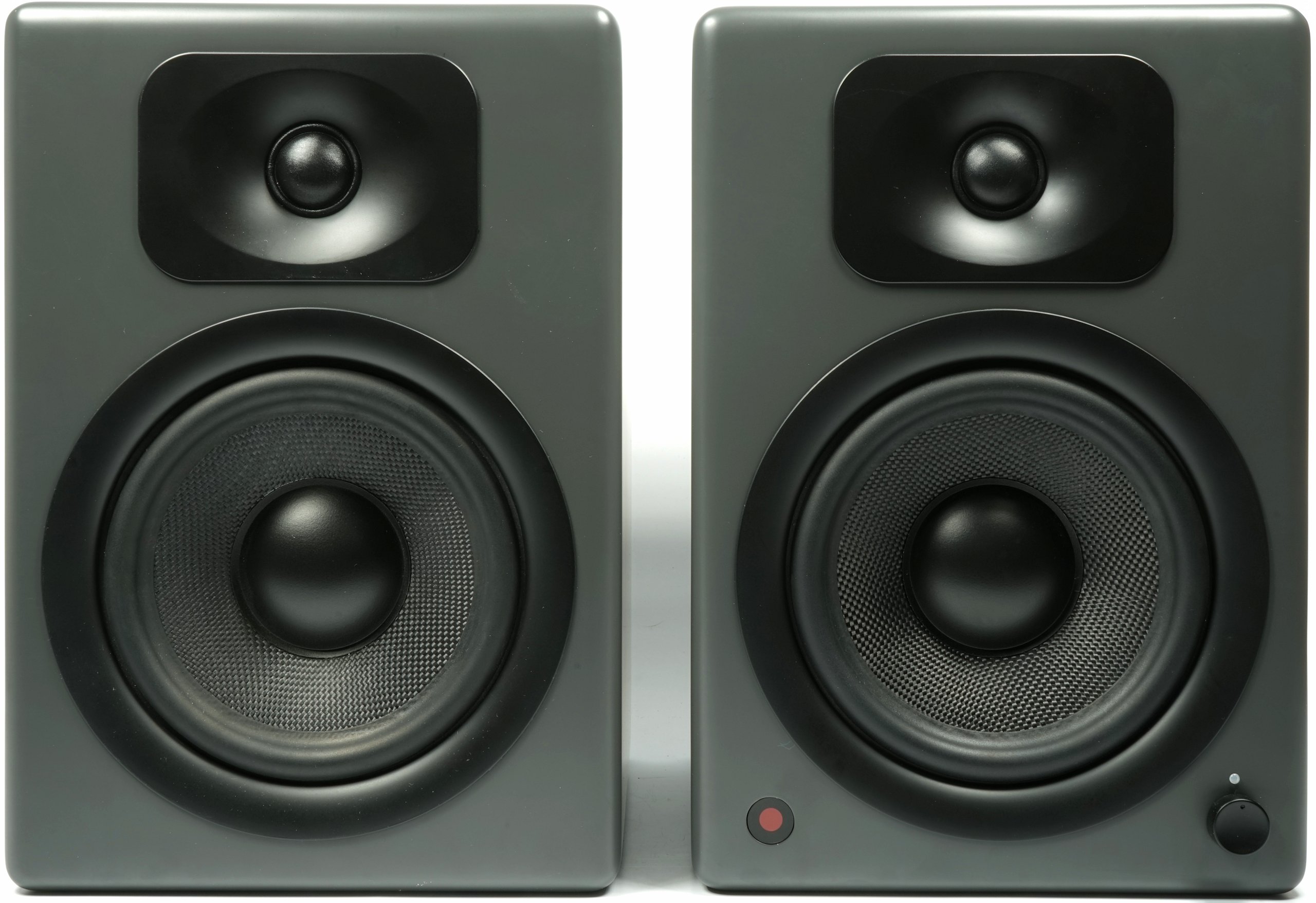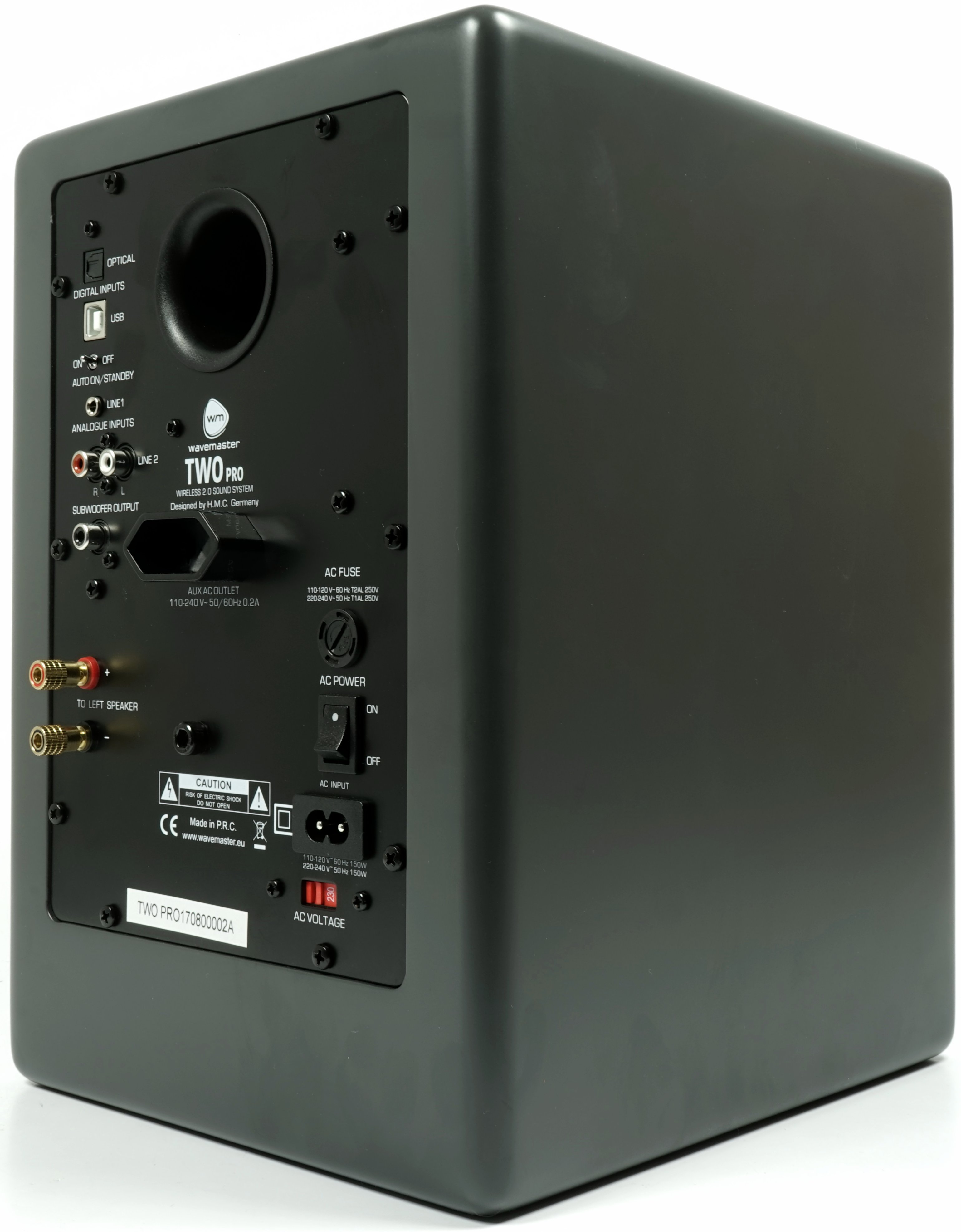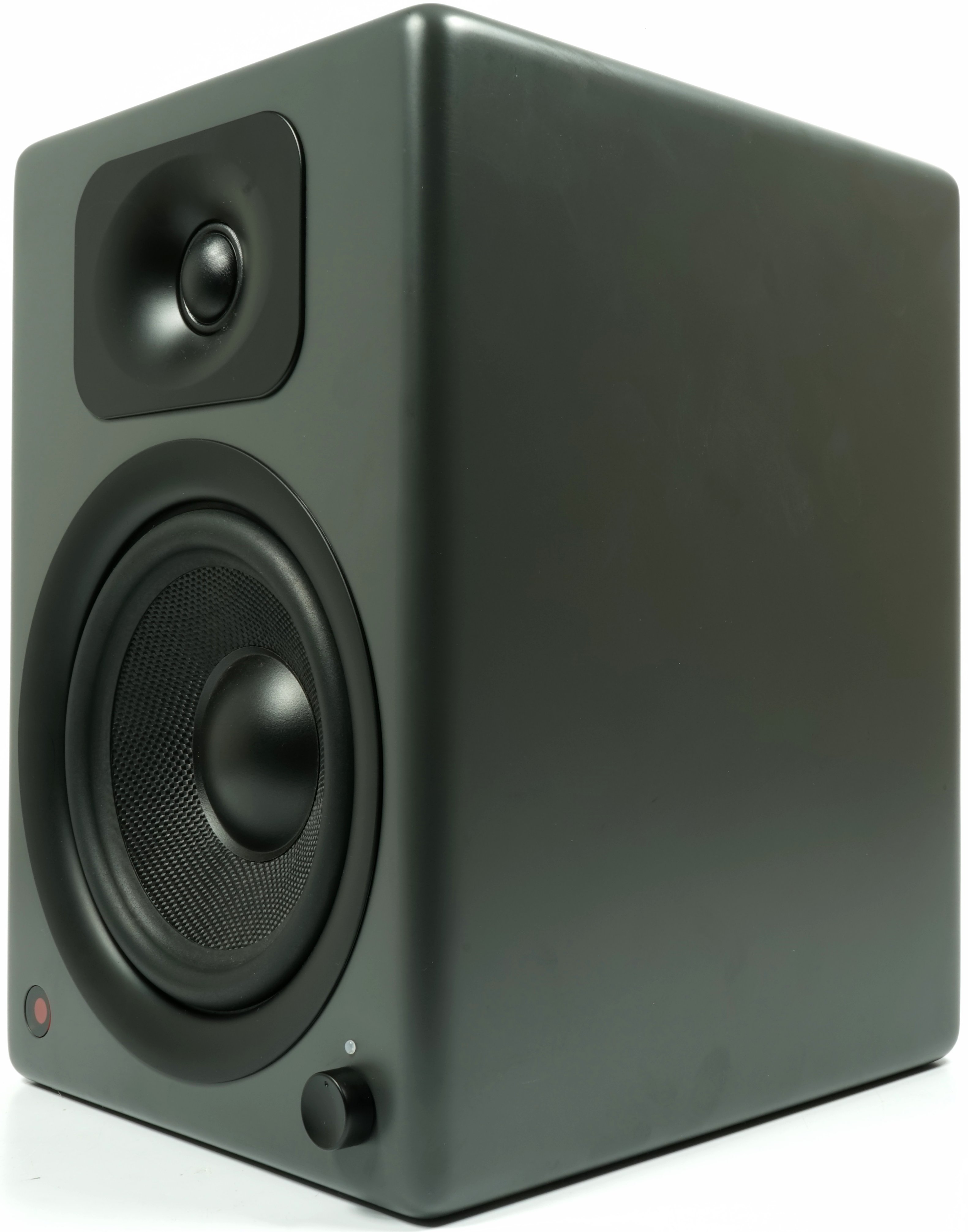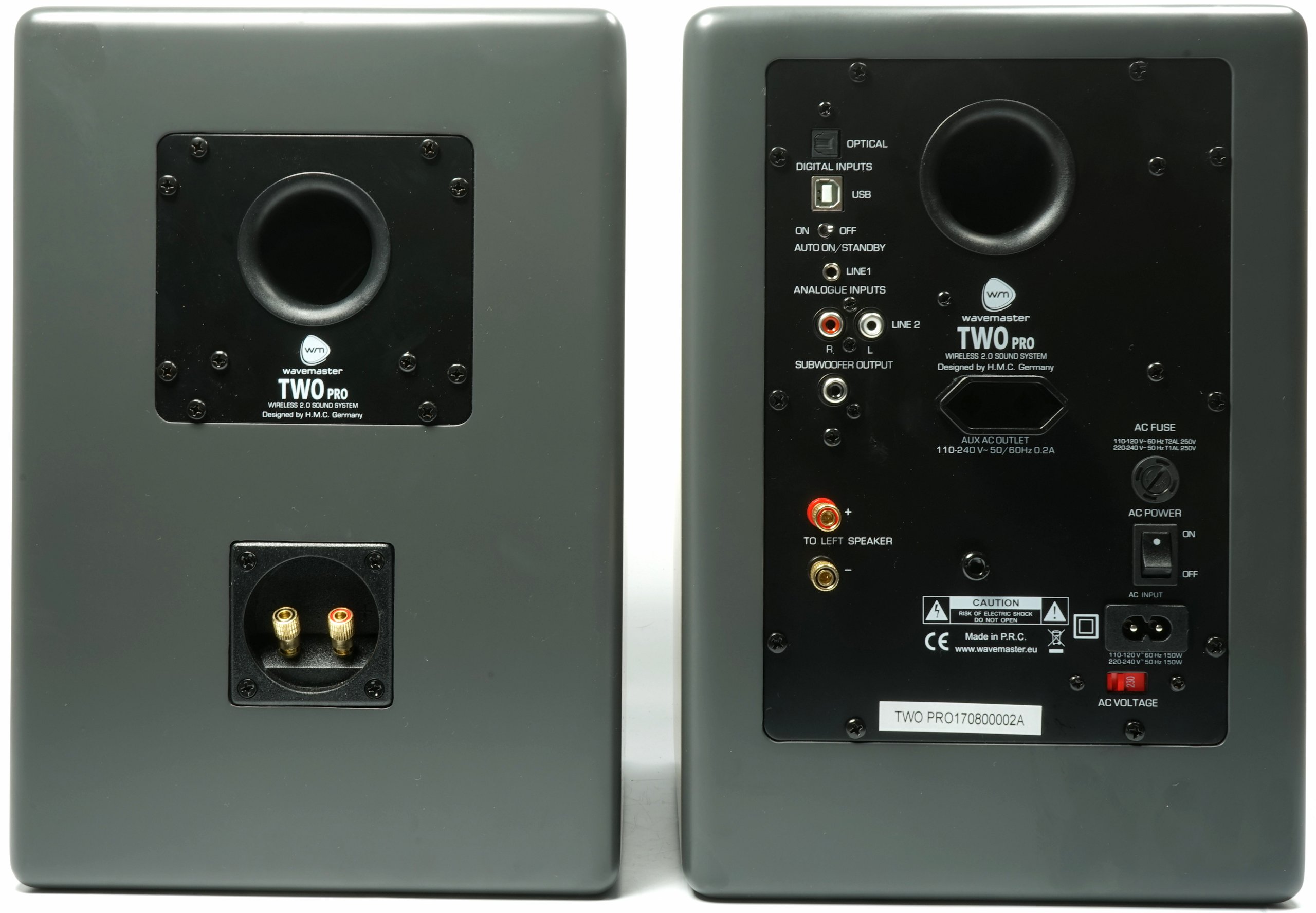Take the very successful Wavemaster Two BT or Two Neo, give it more volume and amplifier power – an active pair of speakers is ready, which can sound from neutrally balanced to Mainstram bass-heavy everything and can even score on the desktop.
The Wavemaster Two BT has already been a test item (Wavemaster Two BT: Active 2.0 sound system with Bluetooth), but with the increased demands, the new active speaker pair has once again increased visually, acoustically and technically. By the way, the active pair of boxes is no longer available in black, but with a matte finish in Stone Gray and in white. How good or Today's test will clarify whether this magnification has succeeded.
Of course, an EIA of 550 euros is already a big fight announcement, because it is no longer cheap. But as long as the performance is right, one can at least still speak of cheap. Because really good sound system also costs a disproportionate amount of money. Value or money-making? That is what we need to find out now.
Scope of delivery and accessories
The scope of delivery is unspectacular as always. In addition to the two-wire power connection cable and a pure 3.5 mm jack cable, a manual and the loudspeaker cable, you get eight round, 4 mm high silicone stickers for the installation, which on the one hand are really nicely non-slip and on the other hand also somewhat elastic to provide a certain damping and acoustic decoupling.
A full-fledged remote control is also offered, which unfortunately is not really a given by many other providers in this price range. In addition to the standby button, there are the range switch, the volume, sound, and balance knobs, as well as a mute button on the control panel. In addition, there is a loudness function and a kind of neutral mode ("Tone Defeat"), which temporarily completely overrides (bypasses) the height and depth control.
Optics, haptics and connectivity
As with the smaller models, all corners and edges are really nicely "round-sucked". In the end, this is not only an optical gimmick, but also has an acoustic background. Of course, one can now discuss the phenomenon of so-called edge dispersions (edge diffraction in combination with diffuse edge scattering), but especially if one sits directly in front of the box (near field) and/or these are rotated in such a way that one hears directly on the axis, then something like this can be noticeable with a trained hearing.
It is important to know that the tweeter in the range from approx. two kilohertz radiates its energy not only in the direction of the listener, but also along the pit front up to the edges of the box. If it then hits angular edges, there is a kind of scattering that would look like a spray mist, as if it were not sound waves but water waves. If you listen directly from the front, you get the direct sound on the one hand and a time-delayed, diffuse sound on the other.
To counteract this phenomenon, Wavemaster has also put the 2.8 cm silk calottes in a plastic trough (so-called Wave Guide) to better focus the radiation and to prevent dispersions even further. The driver for the bass and midrange range with its 16 cm is already quite neat and also has a quite neat stroke.
Unfortunately, the torsion-resistant Kevlar membrane lies free and unprotected, just like the tweeters. Covers are not available and are not optionally plugged in, so curious children's hands will surely enjoy the Dust Caps (curved menbran covers in the middle). Parents will surely know this problem.
On the front side you will find the receiver diode for the IR remote control on the left and the volume control on the right, which also acts as a button for the range selection. The latter is combined with an electronically implemented on/off switch, which reduces the power consumption in this state into barely measurable areas. Above it sits a status LED (RGB), which gives information about the selected switching stage, the Bluetooth connection and the standby state by means of different colors.
The quality of the workmanship is at a very high level in every area. This ranges from strutting and gluing inside to the neatly rounded edges and the rather durable and also somewhat impact- and scratch-resistant paintwork in the outdoor area.
The loudspeaker cable of the passive box is screwed on both sides, which is definitely preferable to simple terminals. The ends of the cable are all already tinned from the factory, which is visually good and also practical, but acoustically not quite optimal, as long as no silver solder is used. Cable sleeves would probably have been the better way here, because it reduces the transition resistances especially for the higher frequencies. But since we all don't have gold ears, we are just happy about the non-fraying cable ends.
On the back is the usual bass reflex opening. Thus, the Wavemaster Two Pro also has to pay attention to a minimum distance to the wall if you do not want to shoot the clean bass into orbit. The tube has a funnel-shaped opening, expanding outwards, both on the outside and inside. Compared to many competitor products, the tube is made entirely of plastic and not of soaked cardboard.
The USB output for powering audio accessories has been deleted this time, as it is probably rarely used. What remains, however, is the looped net jack, in which you can put suitable Apple accessories for a little airplay. This may be a nice gimmick on the sidelines, but for the audio freak it is probably more of a gimmick and almost superfluous on the PC. Audioengine, by the way, omitted this feature at the time during the evolution from the A5 to the 5+ smooth – no one will have missed it either.
The inputs are versatile and range from the digital inputs (optical, USB) to the combined analog inputs (3.5mm jack and RCA). Also new is the subwoofer output, which provides the full mono signal, which is not filtered via a low pass. This avoids redundant filtering on the box and subwoofer.
In addition to the inputs and outputs, there is also a screw insert for the fuse, a real power switch, as well as the small toggle switch for the automatic shut-off in the signal-free state.








































Kommentieren